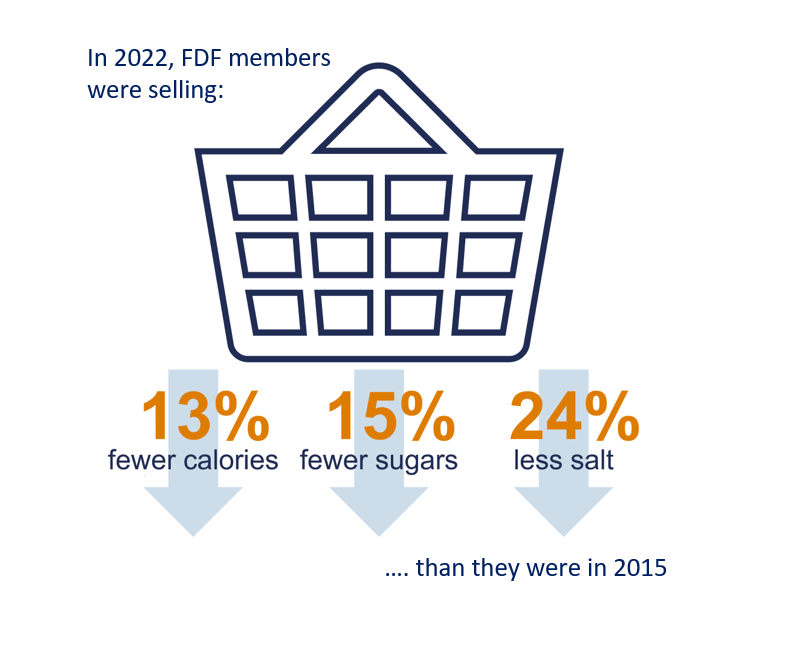
FDF Scotland response to Scottish Government restricting food and drink promotions regulations
Food and Drink Federation Scotland has responded to the Scottish Government consultation on restricting promotions of food and drink regulations.
 Our members have been voluntarily lowering fat, salt and sugars in recipes for decades. Companies have also developed ‘low-in’ products, cut portion sizes, and introduced resealable packaging, along with providing clear, consistent nutrition information.
Our members have been voluntarily lowering fat, salt and sugars in recipes for decades. Companies have also developed ‘low-in’ products, cut portion sizes, and introduced resealable packaging, along with providing clear, consistent nutrition information.
FDF member products provide 10% less calories, 12% less sugars and 16% less salt into the average shopping basket compared to 20171.
Reformulation is technically challenging, costly and time consuming. A stable regulatory environment is needed so companies have the confidence to invest.
We are proud to deliver Reformulation for Health, a Scottish Government funded programme to support smaller businesses based in Scotland to make their products healthier.
1. Kantar Worldpanel data for FDF members, nutrient growth versus the overall volume growth (percentage difference) from 2017 – 2021
Food and Drink Federation Scotland has responded to the Scottish Government consultation on restricting promotions of food and drink regulations.
FDF Scotland has announced £50,000 of funding to help Scottish producers to make their food healthier.
High school students throughout Scotland are relishing the change to get their teeth into their own recipes with the launch of this year’s Better Burger Challenge.
Case Study
Case studies from: pladis, Coca-Cola, Lucozade, Cereal Partners Worldwide UK, Danone UK, Premier Foods, Kerry Foods
Case Study
" The reformulation process is not new to the business, who have been reformulating for years in order to meet retailers’ specification requirements "
Case Study
“Our sales volumes mean that the overall benefits from our reformulation project could be significant. A 10% reduction in salt or calories across our products could add up to some huge figures – almost Brian Cox scale numbers – in reduced calorie and salt consumption nationwide.”
Want to keep up to date on this topic?
You can receive email updates on this topic by registering for an FDF account.
You can edit your preferences so that you receive updates on the topics and the type of information you are interested in.
FDF members have access to a range of benefits to grow, protect and strengthen their business.
Gain an advantage, join FDF today.
FDF members are committed to working alongside government as it develops calorie reduction guidelines. Compared to 8 years ago, FDF member products provide 13% fewer calories into the average shopping basket.
11 September 2023
The FDF and our members are committed to developing healthier products and have made substantial progress to date. This is not straightforward but is one of the most important measures food producers can take to improve the nations' health.
Read more




